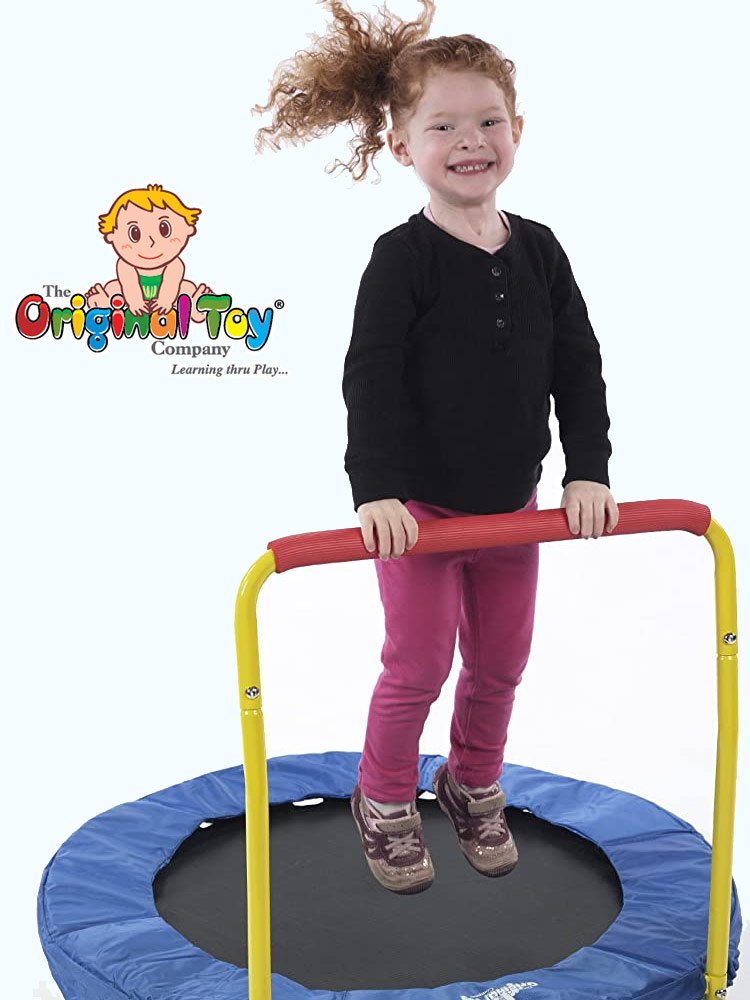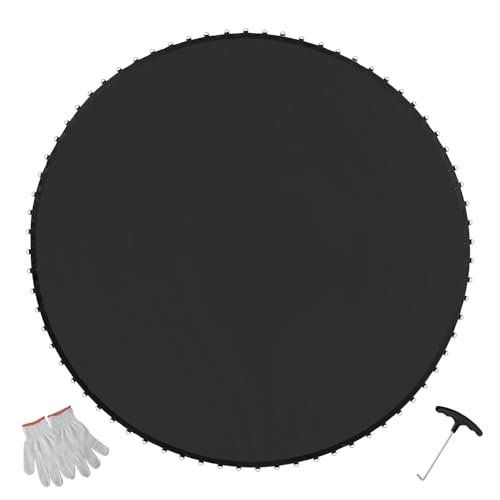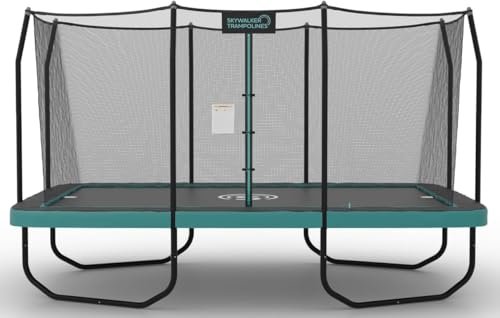Are you thinking about getting a trampoline for your family? You might be wondering, “What age is best to start using a trampoline?” It’s a great question because safety and fun go hand in hand.
You want to make sure your child enjoys bouncing around without any risks. You’ll discover the ideal age to start, important safety tips, and how to make the most out of trampoline time. Keep reading to find out how to keep your little jumper happy and safe!

Ideal Starting Age
Using a trampoline can be fun and healthy for children. Parents often ask what age is best to start trampoline use.
Choosing the right time helps keep children safe and lets them enjoy bouncing with confidence.
Age Recommendations By Experts
Experts suggest children should be at least 6 years old before using a trampoline alone. Younger kids may lack control and balance.
Adult supervision is important for all ages. Safety nets and proper padding also reduce injury risks.
- The American Academy of Pediatrics advises no trampoline use for kids under 6.
- Some experts say children 6 to 10 should use trampolines only with close adult supervision.
- Older children can handle more complex trampoline activities safely.
Developmental Milestones To Consider
Before starting, check if your child meets key physical and coordination milestones. These skills help prevent falls and injuries.
Balance, muscle control, and the ability to follow safety rules are important for trampoline use.
- Good balance to stay upright during jumping
- Strong muscle control for safe landings
- Listening skills to follow safety instructions
- Understanding of personal limits and space

Safety Measures For Beginners
Starting to use a trampoline can be fun but also risky. Safety is very important, especially for beginners.
Knowing the right age and safety steps helps prevent accidents and injuries on the trampoline.
Essential Safety Gear
Wearing the right safety gear protects beginners from falls and bumps. It reduces the chance of serious injury.
- Helmet to protect the head
- Knee and elbow pads for joint protection
- Non-slip socks or shoes for better grip
- Safety net enclosure around the trampoline
Always check that the safety gear fits well and is in good condition before jumping.
Setting Up A Safe Environment
The area around the trampoline should be free of hard surfaces and sharp objects. This helps keep beginners safe.
- Place the trampoline on flat, soft ground like grass
- Keep at least 8 feet of clear space around the trampoline
- Use padding on the trampoline frame and springs
- Make sure the trampoline has a safety net enclosure
- Supervise children while they use the trampoline
Regularly inspect the trampoline for damage or wear to keep the environment safe for beginners.
Benefits Of Early Trampoline Use
Trampolines offer many benefits for children. Starting young helps kids gain these benefits early.
Using a trampoline safely at an early age supports growth and development in fun ways.
Physical Advantages
Jumping on a trampoline improves balance and strength in young children. It helps build muscle and coordination.
Early use encourages healthy bones and joints. Regular activity on a trampoline increases stamina.
- Improves balance and coordination
- Strengthens muscles and bones
- Increases endurance and stamina
- Supports healthy growth of joints
Cognitive And Social Gains
Using a trampoline helps young kids focus better. It also improves their spatial awareness.
Playing with others on a trampoline builds social skills. Kids learn to share and communicate while having fun.
- Enhances focus and attention
- Develops spatial and body awareness
- Encourages social interaction
- Teaches cooperation and sharing
Risks And Precautions
Using a trampoline can be fun but also risky, especially for young children. Knowing the right age to start and taking safety steps can help reduce injuries.
Parents and caregivers must understand common injuries and how to supervise children properly while using a trampoline.
Common Injuries And How To Prevent Them
Trampoline injuries often include sprains, fractures, and head injuries. Many injuries happen when children fall off or land incorrectly.
- Sprains and strains from awkward landings
- Broken bones caused by falls or collisions
- Head and neck injuries from flips or rough play
- Abrasions from hitting the trampoline frame
To prevent these injuries, use safety nets and padding around the trampoline. Limit the number of jumpers to one at a time. Teach children to jump in the center and avoid flips or somersaults.
Supervision Guidelines
Adult supervision is key to trampoline safety. Supervisors should watch children closely and stop risky behavior immediately.
| Supervision Tip | Description |
| Be Present | Always watch children while they jump |
| Set Rules | Explain safe jumping and no roughhousing |
| Limit Users | Allow only one child on the trampoline at a time |
| Check Equipment | Make sure the trampoline is in good condition |
| Age Limits | Do not allow children under 6 years old to jump |
Choosing The Right Trampoline
Deciding the best age to start using a trampoline depends on the type you choose. Picking the right trampoline ensures safety and fun for young users.
Parents should look at size, design, and special features for kids. These factors help make the trampoline suitable for children’s needs.
Size And Design Options
Trampolines come in many sizes and shapes. Smaller trampolines fit young children better and take less space.
Round trampolines are safer for kids because they bounce toward the center. Rectangular trampolines offer more bounce but need more room.
- Small trampolines (under 8 feet) are good for toddlers and young kids
- Medium sizes (8 to 12 feet) suit older children
- Round shapes reduce injury risk
- Sturdy frames improve safety
Features For Young Users
Trampolines for young kids should have safety nets and padded edges. These features keep children safe during play.
Some trampolines include lower weight limits and easy-access doors. These help parents control who uses the trampoline.
- Safety nets prevent falls off the trampoline
- Padded springs and frames reduce injury risk
- Lower weight limits help protect small children
- Easy-close doors keep kids inside while jumping
Training And Skill Development
Starting trampoline training at the right age helps build good skills safely. Training focuses on balance, control, and confidence.
Children learn better with simple exercises. Skill development grows as they practice regularly on the trampoline.
Basic Techniques For Beginners
Beginners should start with simple jumps to learn body control. Basic techniques help avoid injuries and build a strong foundation.
Focus on straight jumps, safe landings, and balance. Practicing these skills improves coordination and confidence on the trampoline.
- Start with small bounces to feel the trampoline’s surface
- Keep your knees slightly bent when landing
- Use your arms for balance and control
- Practice jumping in the center of the trampoline
Progressing Safely
Progress slowly by adding new moves only after mastering basics. Safety gear like pads and nets helps prevent injuries.
Supervision by an adult or coach is important. This support helps keep training safe and encourages good habits.
- Increase bounce height step by step
- Practice turns and controlled twists carefully
- Learn how to stop and get off safely
- Always warm up before trampoline use
- Check trampoline condition regularly for safety

Frequently Asked Questions
What Is The Ideal Age To Start Trampoline Use?
Most experts recommend starting trampoline use at age 6 or older. Younger children have less body control, increasing injury risk. Supervision and safety measures are crucial at any age.
Can Toddlers Safely Use A Trampoline?
Toddlers under 6 should generally avoid trampolines. Their bones and coordination are still developing, which raises injury chances. Soft play areas are safer alternatives.
How Can I Ensure Trampoline Safety For Kids?
Always supervise children on trampolines. Use safety nets and padding, limit jumpers to one at a time, and set clear rules. Regularly inspect the equipment for damage.
Are There Health Benefits Of Trampoline Jumping For Kids?
Yes, trampoline jumping improves balance, coordination, and cardiovascular fitness. It also boosts muscle strength and promotes fun physical activity for children.
Conclusion
Choosing the right age for trampoline use is important. Safety should always be a priority. Most experts recommend starting around age six. At this age, children have better balance and coordination. Supervision is key to prevent accidents. Always check for safety features on trampolines.
This includes netting and padding. Encourage children to jump safely. Teach them to avoid somersaults and flips. Regular checks of equipment ensure everything is secure. Trampolines can be fun and healthy. With the right precautions, they offer great exercise. Enjoy watching your child bounce safely.



